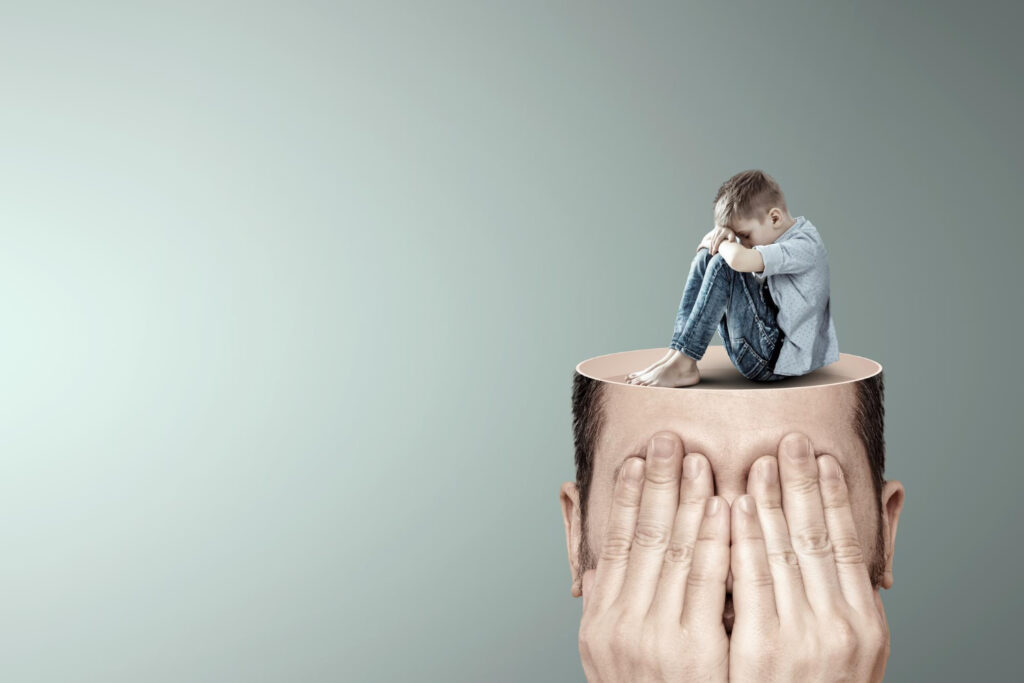Anxious attachment style, also known as ambivalent or anxious-preoccupied attachment, represents a significant aspect of my exploration into mental health and relationships. Stemming from early bonding experiences, this attachment style is characterized by a deep-seated fear of abandonment and an intense desire for intimacy. It affects roughly 20% of the population, influencing how individuals relate not only to romantic partners but also to friends and family. Understanding the nuances of anxious attachment, including its signs and impacts on relationships, is crucial for fostering healthier connections.
My article aims to dissect anxious attachment style, shedding light on the triggers, behavioral patterns, and strategies for managing anxiety in relationships. As we delve into the role of therapy and journey towards secure attachment, we’ll explore both the genetic and environmental factors that contribute to this attachment style. By examining these dynamics, readers can gain insights into their own attachment styles and learn practical steps for cultivating more secure and fulfilling relationships.
Understanding Anxious Attachment
In exploring the anxious attachment style, it’s crucial to understand its foundation and characteristics. This style is marked by a complex blend of behaviors and emotions, primarily stemming from early life experiences.
- Trust Issues and Dependency:
- Clinginess: Individuals often appear needy, craving constant reassurance from their partners or friends.
- Trust Difficulties: There’s a pervasive worry that loved ones will leave, making it hard to fully trust others.
- Sensitivity to Rejection:
- Fear of Abandonment: A hypersensitivity to any sign of rejection or abandonment. Even minor signs can trigger intense anxiety.
- Hyperactivation: Constant vigilance for cues that someone is about to leave, needing frequent reassurance, and interpreting small issues as significant threats.
- Root Causes:
- Genetic and Environmental: Both genetic predispositions and early childhood experiences, such as overprotective parenting, abuse, or neglect, contribute to developing an anxious attachment style.
- Inconsistent Caregiving: Growing up with unpredictable emotional support from caregivers fosters confusion and insecurity, laying the groundwork for anxious attachment.
Understanding these aspects is pivotal for recognizing anxious attachment in oneself or others, paving the way for addressing and managing these patterns in relationships.

Signs of Anxious Attachment in Adults
Identifying anxious attachment in adults often involves recognizing a constellation of behaviors and emotional responses that signal an underlying insecurity in relationships. These signs can manifest distinctly and impact one’s mental health and bonding experiences. Here’s a closer look at some key indicators:
- Emotional Responses and Behaviors:
- Clinginess and Fear of Abandonment: Feeling an overwhelming need to be close to a partner and fearing their departure.
- Trust Issues and Emotional Neediness: Struggling to trust others fully while displaying a significant need for emotional support.
- Jealousy and Reassurance Needs: Exhibiting jealousy in relationships alongside a constant need for reassurance from partners.
- Maladaptive Beliefs and Thought Patterns:
- Defectiveness and Abandonment Fears: Believing one is inherently flawed and fearing eventual abandonment by loved ones.
- Helplessness and Conditional Worth: Feeling helpless without a partner’s support and believing one’s worth is conditional on others’ approval.
- Relationship Dynamics:
- Attracting Emotionally Unavailable Partners: Often finding oneself in relationships with partners who are emotionally distant.
- Difficulty with Vulnerability: Struggling to open up and be vulnerable in relationships, fearing it may lead to rejection or abandonment.
Understanding these signs is crucial for recognizing anxious attachment in oneself or others, paving the way for healthier relationship dynamics and personal growth.
Triggers and Behavioral Patterns
Being mindful of potential triggers and managing reactions is a cornerstone in overcoming an anxious attachment style. Key strategies include:
- Self-Regulation Techniques:
- Control Emotions: Learn to manage emotional responses, aiming to reduce the intensity of reactions.
- Calm Down: Develop methods to soothe oneself in moments of distress, such as deep breathing or mindfulness meditation.
- Handle Conflict: Practice resolving disagreements without resorting to negative emotions, fostering a healthier communication pattern.
- Therapy and Understanding:
- Behavior Patterns: Therapy can unveil patterns of anxious attachment, linking them to past experiences.
- Forming Healthy Bonds: Explore strategies within therapy to cultivate secure and trusting relationships.
- Recognizing Emotional Triggers:
- Common Triggers: These include perceived cold responses, feeling alone, sudden changes in communication, and significant relationship milestones.
- Hyperactivating Strategies: Identifying behaviors like clinging, demanding reassurance, and overthinking can highlight areas for growth.
Understanding these triggers and behaviors is crucial for anyone looking to navigate the complexities of anxious attachment. By recognizing and addressing these patterns, individuals can take meaningful steps towards fostering more secure and satisfying relationships.
Strategies for Managing Anxious Attachment
Navigating the complexities of an anxious attachment style can be challenging, but with the right strategies, it’s possible to foster healthier relationships and personal growth. Here are some actionable steps to consider:
- Positive Reinforcement and Self-Reflection:
- Acknowledge Past Pain: Recognize and validate the pain from past experiences, understanding its impact on current behaviors and thoughts.
- Update Old Ways of Thinking: Shift from negative to positive thinking about oneself and relationships, focusing on positive emotions and outcomes.
- Voice Emotional Needs: Clearly express your needs and wants in relationships, overcoming the fear of disappointment.
- Building Healthy Relationships:
- Form Connections with Securely Attached Individuals: Engage with people who exhibit secure attachment traits, learning from their approach to relationships.
- Self-Esteem Enhancement: Engage in activities and thoughts that boost self-esteem, such as positive self-talk, learning new skills, and practicing self-compassion.
- Mindfulness and Coping Strategies:
- Practice Mindfulness: Stay present and aware, reducing feelings of anxiety and aggression.
- Manage Anger Constructively: Communicate feelings of anger in ways that strengthen, rather than harm, relationships.
- Seek Therapy: Work with a therapist to understand triggers and develop healthy coping mechanisms, including changing negative thought patterns to healthier alternatives.
These steps are designed to guide individuals with an anxious attachment style towards more secure and fulfilling relationships, emphasizing the importance of self-work and the role of positive interactions in healing and growth.
The Role of Therapy in Addressing Anxious Attachment
In my journey to understand and manage my anxious attachment style, therapy has emerged as a pivotal tool. Here’s how different therapeutic approaches have played a role:
- Interpersonal Therapy (IPT) and Cognitive Behavioral Therapy (CBT):
- IPT: Focuses on improving interpersonal relationships and social interactions, essential for those of us grappling with anxious attachment. It teaches us how to form healthier connections.
- CBT: Targets the negative automatic thought patterns fueling our relationship anxieties. It’s about altering those deep-seated beliefs that we’re not enough or that we’re bound to be abandoned.
- Medication:
- When anxious attachment intertwines with diagnosed anxiety disorders, SSRIs (Selective Serotonin Reuptake Inhibitors) may be prescribed. This combination addresses both the symptoms of anxiety and the underlying attachment issues.
- Psychotherapy Variants:
- Beyond IPT and CBT, emotionally focused therapy and psychodynamic therapy offer additional avenues. These therapies delve into emotional experiences and past events that have shaped our attachment styles, aiming to foster secure and healthy bonds.
Engaging with these therapeutic strategies has been a cornerstone of my progress. It’s not just about understanding the anxious attachment style but actively working towards healthier, more secure relational patterns.
Moving Towards Secure Attachment
In my journey towards healing and managing anxious attachment, I’ve discovered several key strategies that have significantly contributed to moving towards a more secure attachment style. These strategies are not only applicable to my personal growth but can also aid others in their quest for healthier relationships and self-understanding.
Healing Anxious Attachment Across Different Stages:
- Children:
- Provide a secure base and address any trauma.
- Seek professional help if necessary.
- Romantic Relationships:
- Open communication and active listening.
- Establish healthy boundaries and consider therapy.
- Adults:
- Challenge negative beliefs and irrational fears.
- Develop a strong sense of self and spend time with securely attached individuals.
Key Principles for Nurturing Secure Attachment:
- Consistent Effort and Self-Awareness: Crucial for creating a secure attachment.
- Regular Reflection: Focus on how to respect, understand, and love yourself and your partner, leading to greater intimacy.
- Supporting a Partner: Identify your own attachment style, practice clear communication, and offer consistency.
Understanding that anxious attachment stems from insecurity and abandonment issues from childhood has been enlightening. Recognizing signs such as intense emotional discomfort, codependency, and a need for validation from others has been the first step towards addressing and overcoming these challenges. With dedicated effort, support, and mental health treatment, changing one’s attachment style is indeed possible over time, paving the way for healthier and more fulfilling relationships.
Conclusion
Through this comprehensive exploration of the anxious attachment style, we have unraveled its complexities, from early developmental triggers to the tangible steps necessary for fostering healthier relationship dynamics. By highlighting the significance of recognizing patterns, responding to emotional triggers, and embracing therapy, the guide aims to empower individuals with anxious attachment to navigate their journey towards secure attachment with confidence and clarity. The strategies discussed, including mindfulness, positive self-reflection, and engaging with securely attached individuals, emphasize the transformative power of self-awareness and intentional effort in reshaping attachment styles.
As we conclude, it’s pivotal to remember that moving from an anxious to secure attachment style is a gradual process that requires patience, persistence, and often, professional guidance. The journey towards healing and establishing more fulfilling relationships is not only about combating fear of abandonment but also about nurturing self-esteem, cultivating open communications, and building resilience against life’s challenges. Embarking on this path towards secure attachment heralds a hopeful horizon for not just enhancing personal relationships but also for profound self-discovery and growth, reinforcing the belief that change, though challenging, is within reach.
FAQs
How can I overcome my anxious attachment style?
To overcome an anxious attachment style, you should start by recognizing the symptoms and learning about attachment theory. Engage with individuals who display a secure attachment style to learn from them. Focus on building your self-esteem, which will help you express your needs and emotions more genuinely. Practice self-regulation and mindfulness to control your reactions. Additionally, seeking therapy can be a very effective way to address and improve your attachment issues.
What are effective coping strategies for someone with an anxious attachment style?
For individuals with an anxious attachment style, it’s crucial to develop ways to self-regulate emotions. Some effective coping mechanisms include taking some time for yourself, listening to music, splashing your face with cold water, engaging in deep breathing exercises, or taking a walk. These strategies can help manage the intense emotions that come with anxious attachment.
What are some tips for communicating with a person who has an anxious attachment style?
When communicating with someone who has an anxious attachment style, consider these seven tips:
- Recognize that your partner wants to feel loved and assured by you.
- Show a genuine interest in their feelings.
- Provide affection consistently on a daily basis.
- Close physical proximity, such as sitting closer or leaning in, and maintaining eye contact can be reassuring.
- During disagreements, focus on the content of their words rather than their tone of voice.
What types of therapy are beneficial for anxious attachment?
Interpersonal therapy (IPT) is particularly beneficial for treating anxious attachment. IPT focuses on improving interpersonal relationships and social functioning. With the guidance of a therapist, individuals can identify problematic aspects of their relationships, address any deficits, and develop new, healthier interpersonal skills.
















